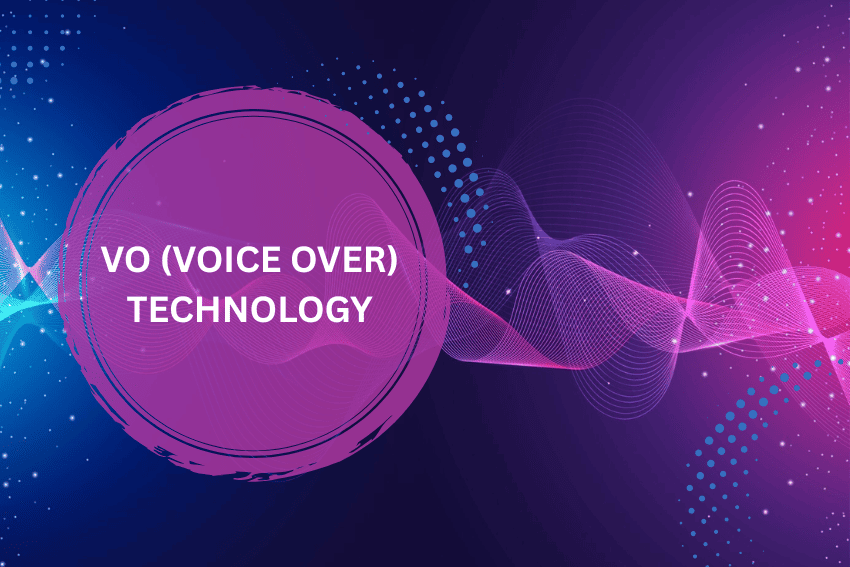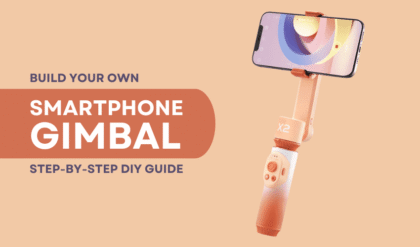Introduction to VO Technology
Voice over (VO) technology is a new and exciting field that aims to digitize and enhance the human voice. It has many applications including basic audio recording and sound synthesis and manipulation. This technology is rapidly evolving as a result of advances in artificial intelligence, machine learning, and natural language processing over the last few decades.

Taking a deeper look at this topic, we will discuss the different forms or types of VO technology, their current use, and their potential use in the future.
Types of Voice Over Technology
Voice over technology includes various techniques that can be used to record and modify voices in a variety of applications including text to speech, speech synthesis, and digital audio processing. These technologies are widely used in media production, telecommunications, and accessibility solutions.
- Traditional Voice Over Tools: These involve the use of specific hardware and software such as mixers, audio interfaces and recording software, and will require a physical recording studio to record high-quality voice overs.
- Digital & AI-Based Voice Over: This new technology involves digital software and AI-based voice overs that can be produced at will rather than requiring live recording sessions and are also quick and flexible.
- Cloud-Based VO Platforms: This type of platform enables the user to upload scripts, choose sound options and produce voice overs over the web, and the advantage is ease of access and collaboration no matter where the user is located.
Uses of Voice Over (VO) Technology
Voice over (VO) technology has quickly gained popularity in many industries as it provides better communication with the user and a more personalized experience. Here is an in-depth discussion on the use of VO technology in various fields.
Media and Entertainment
VO technology is important in content creation and distribution in the media and entertainment industry. It can produce high-quality sound in movies, television programs, video games, and podcasts so that the story is interesting and entertaining. One example of this is that VO artists are allowed to dub foreign films into different languages, making them available to the international market.
In addition, VO technology is also a necessity in the game industry for voice communication between players and for providing dynamic voice-based dialogue to non-playable characters (NPCs). This technology also makes it possible to create virtual assistants and automated customer service systems that can respond to and understand voice commands to improve user interaction and satisfaction.
Corporate Training and e-Learning
VO technology is very beneficial for corporate training and e-learning through the creation of interactive and engaging learning content. VO allows businesses to develop narrated presentations, tutorials, and e-books, allowing learners to remember the content for longer.
Moreover, VO enhances accessibility, and people with visual or hearing impairments can easily access educational content. In corporate scenarios, VO technology is used to create onboarding videos and compliance training modules that can be viewed anywhere, anytime, creating a more flexible and inclusive learning environment.
Marketing and Advertising
VO technology plays a vital role in the marketing and advertising sector, where it helps develop engaging, inspiring, and memorable audio content for the target audience. It is also used in advertisements, promotional videos, and webinars, where it makes the message more engaging than the message received through text. Voice over technology enables brands to create inspiring stories, helping to build trust and conversions.
In addition, VO allows marketing campaigns to be personalized by taking into account individual preferences and behavior, thereby increasing the rate of engagement and customer relationships. VO is also used in voice search optimization, where brands take advantage of the emerging trend of voice-activated devices to make their content available in voice search.
Gaming
VO technology is used by the gaming industry to provide additional layers of realism and interactivity to players. Whether it is one-to-one storytelling or engaging multiple players in social experiences, VO technology can make characters and environments appear more lifelike and increase immersion and emotional engagement. Game developers use VO to give characters realistic dialogue, making gameplay feel more natural and believable.
In addition, VO allows for dynamic dialogue trees and branching stories to give the player a sense of agency and choice in the game world. Given the changes in the gaming world, having high-level VO ability is essential to stay competitive and keep up with new ways of gaming.
Assistive Technology
VO technology is used as a form of assistive technology that aims to enhance accessibility and quality of life for individuals with disabilities. Under VO, visually impaired users can navigate digital interfaces through screen readers and have text and interface components read out loud.
Similarly, speech recognition software powered by VO technology helps individuals with motor disabilities to use computers and mobile devices easily by giving instructions. Communication devices of people with speech impairments also rely on these technologies to make them more expressive and independent in communication. VO technology plays an invaluable role in assistive technology as it can create greater independence and inclusiveness.
Benefits of Voice Over (VO) Technology
Voice Over (VO) technology has many benefits that are incomparable to traditional human voice acting as it is scalable, affordable, multilingual, and engaging for users.
Scalability and Speed
One of the most notable benefits of VO technology is that it is highly scalable both up and down and is therefore suitable for any type of business. VO technology can be used to produce audio content at a fast pace, while employing multiple human voice actors can be time-consuming and expensive.
Automated processes provide companies with the opportunity to create high-quality voiceovers in marketing campaigns, e-learning lessons, and customer service messages in a very short time without compromising on quality.
Cost Effectiveness vs. Human Voice Actors
Using VO technology also saves a lot of money compared to using human voice actors. While professional voice artists charge as per the duration of the project, VO software is priced per minute or sometimes even as an annual subscription fee.
Moreover, VO technology is a cheaper option in long-term projects as it does not include travel, session fees, and re-recording costs. Using this technology, businesses can produce unlimited voiceover content within their budget thereby increasing the return on investment (ROI).
Multilingual Support and Localization
Multilingual skills are crucial to target diverse audiences in the modern globalized world. VO technology is best suited to deliver a seamless linguistic experience using superior text-to-speech (TTS) engines. These engines are capable of conveying your message to each target demographic group by imitating natural voices in different languages, dialects, and accents.
This localization feature not only expands your market reach but also makes your communication more culturally relevant to your audience, making them feel more relevant and interesting.
Improve User Accessibility and Engagement
Voiceover technology is an important way to improve user experience through personalized interaction and dialogue. For example, TTS can be used in e-learning systems where course content is recorded and narrated to the learner, with auditory learning preferences and a general understanding of the subject matter.
Voice commands and responses in mobile applications make navigation simpler and more accessible for any user as it helps them navigate more intuitively, whether or not they can read or navigate complex interfaces.
Moreover, incorporating VO into online platforms such as apps and websites will mean that your content will be easily accessible to people with visual impairments, thereby promoting inclusivity.
Challenges and Limitations
Along with its many advantages, VO technology also has several issues and drawbacks that prevent it from being used to its full potential. It is important for stakeholders to understand these challenges in implementing and using this technology.
Another major problem is the quality of voice synthesis. Although progress has come a long way, not all automated voice systems are able to make speech sound as natural as a human voice, which may affect the level of interaction with listeners and brand image.
Another limitation is that it is difficult to generate emotional nuances in synthesized voices. Emotional expression is an important part of the human communication process and existing VO technologies have proven unable to convey emotional nuances, which can have a profound impact on the reception and interpretation of messages.
Privacy is also a concern as the VO technology used processes a lot of information, including sensitive information. It is important to have a strong security system and comply with privacy regulations, which may prove challenging later on.
Also, customization and personalization are limited. Developing a voice that perfectly matches the unique character of a specific brand or personality is a skill that has not yet been fully developed.
Ultimately, the implementation and maintenance of VO technology may be too costly for small and medium-sized enterprises, leaving them restricted to these new solutions.
The Future of VO Technology
The future of VO technology is bright, and current innovations will soon solve existing problems and provide new opportunities. Voice synthesis is likely to improve through the advancement of artificial intelligence (AI) and machine learning (ML), and thus become more realistic and expressive.
With advanced AI algorithms, the nuances of human speech, such as subtle intonations and emotional fluctuations, will be better understood and simulated. This advancement will result in even more intimate and interesting sound dialogues, making the distinction between artificial and human voices even more complex.
In addition, the increasing use of 5G networks and other high-speed internet technologies will make it easier to process voices in real-time, streamlining conversations and improving user experience in various apps and services, including gaming and telehealth.
Moreover, with the increasing accessibility and affordability of VO technology, we should expect more use of it in many sectors such as education, healthcare, retail, and entertainment. This evolution will give rise to innovation, new use cases, and business models based on voice-powered interactions.
How to Choose the Right VO Technology for Your Needs
To make the right choice of VO technology, it is important to take into account several factors to ensure that the chosen solution will properly meet your specific needs. The following are some of the key things to consider when making this decision:
- Budget: You should evaluate your budget. VO technologies vary in price, and it is important to know how much you can afford to spend without overspending and not getting what you need.
- Compare Providers: Compare the voice synthesis of each option in terms of quality. Look for providers whose voices are clear and natural and that suit your brand image or your application’s use case.
- Customization and Personalization: Think about the extent to which customization and personalization can be done. VO technologies offer a unique listening experience, as some of them allow extensive customization of voice quality, including accent, intonation, and pitch.
- Compatibility: Consider the compatibility of integrations with existing systems and platforms. Make sure the VO technology you choose can work well with your existing infrastructure, without making major changes to the system or incurring additional costs.
- Support: Consider the vendor’s support and maintenance services. Reliable technical support and frequent upgrades are essential to resolve potential problems and keep the system in the best condition.
Conclusion
Voice over technology stands at a crossroads between the latest research and practice, and it is set to redefine how we communicate and interact with technology. VO technology has already had a profound impact on industry, including making things more accessible and consumer-friendly and changing the way entertainment and media are produced.
In the future, continued innovation and rational reflection on ethical and practical issues will be key factors in realizing the potential of this revolutionary technology.
To summarize, it can be said that voice over technology is a growing field with immense potential. Its power can be used to develop more inclusive, efficient and engaging communication solutions in the future by continuing to innovate and overcome existing barriers.





